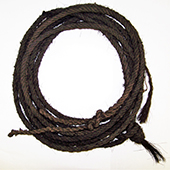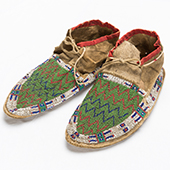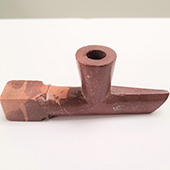Painted Hides
Hide painting was a widespread art form across the Plains. On hide robes like these, the paintings were displayed across the wearer’s back. The most popular colors in these paintings were red and black, as shown on both of these robes.
Hides like these are especially significant because there are very few such robes in existence, and examples of Comanche clothing in museum collections east of the Mississippi are quite rare.
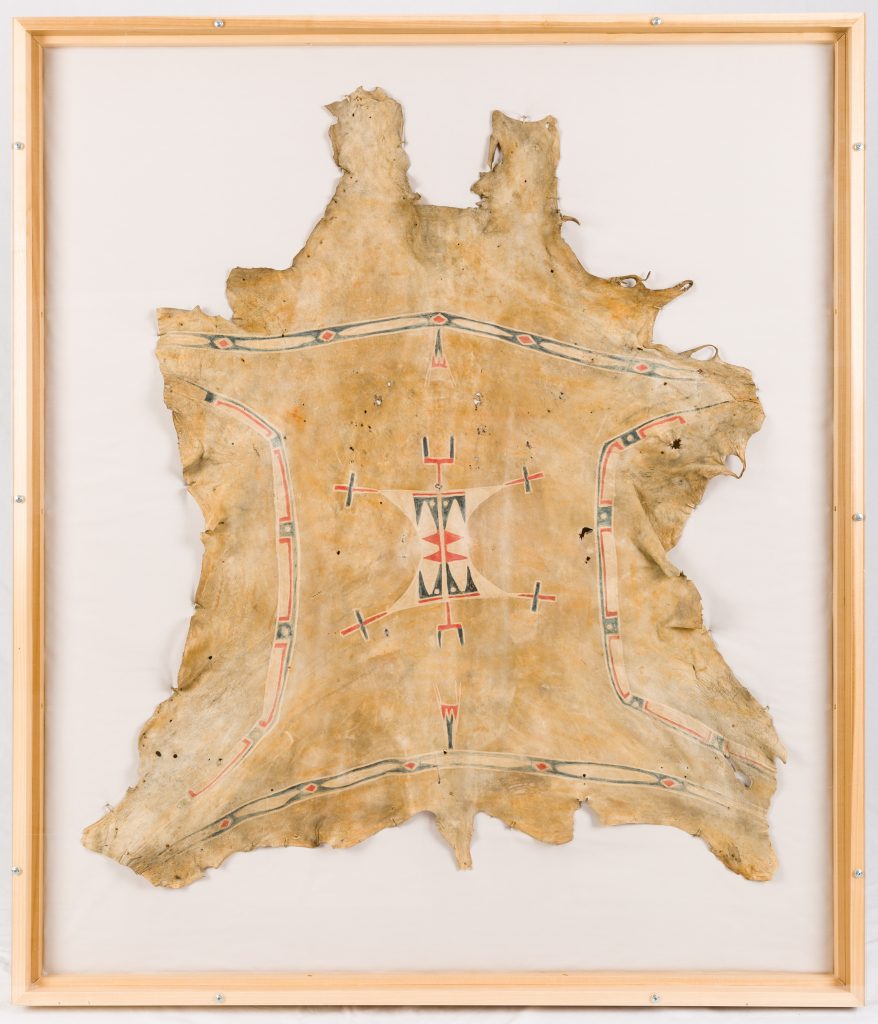
Child’s Hide Robe
Comanche
Mid 19th century
1985.E.657
The geometric design on this hide is a recognized pattern called Border and Hourglass. It was a popular motif in the southwest Plains region, especially among the Comanche, and it is associated with curing or healing ceremonies. Geometric designs were traditionally painted by women, while men painted representational ones. On this hide, the hourglass in the center takes the form of a stylized animal. This image is the closest to a representation of a life form found in geometric designs. Holes from the pegs used to stretch the hide before painting are visible in the upper right side of the hide.
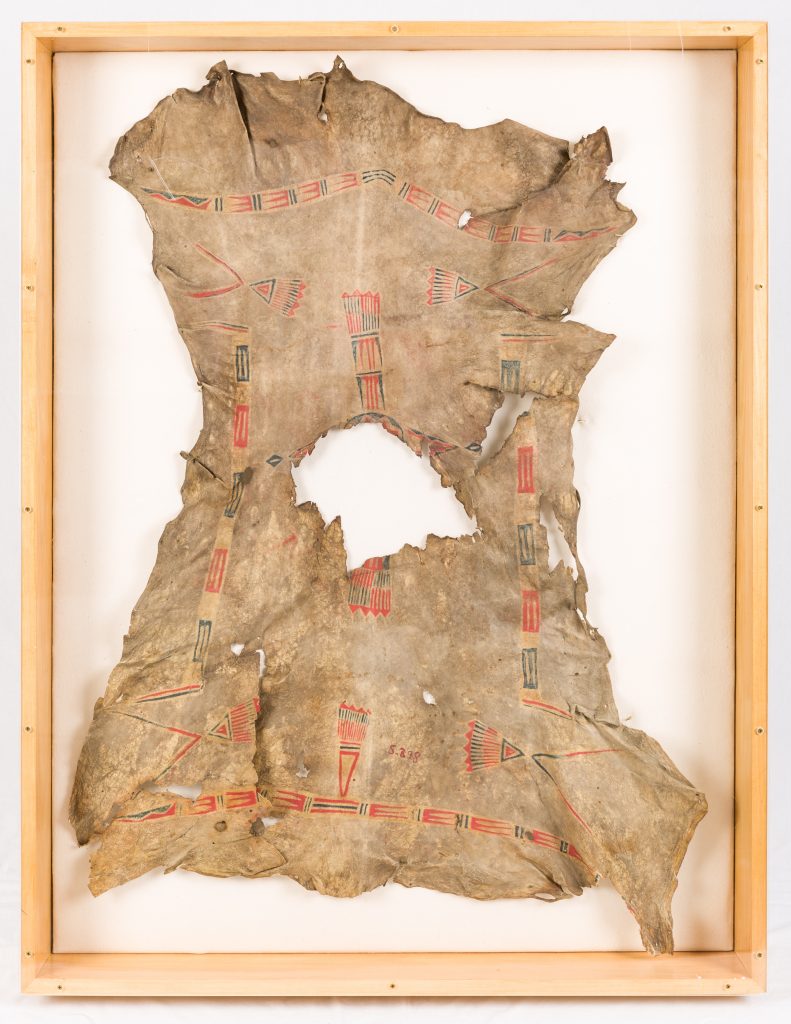
Child’s Hide Robe
Comanche
Mid 19th century
1985.E.029
This painted hide served as a robe for a female child. Robes such as this one were worn as a coat and used as an additional layer in cooler weather. In winter, heavier hides with the animal hair still attached would have been used to provide additional warmth. Although buffalo hide robes are the most common, deer hides, like this one, were also worn because they were considered to be more comfortable and pliable for everyday clothing.
Explore the other sections of this exhibit below
